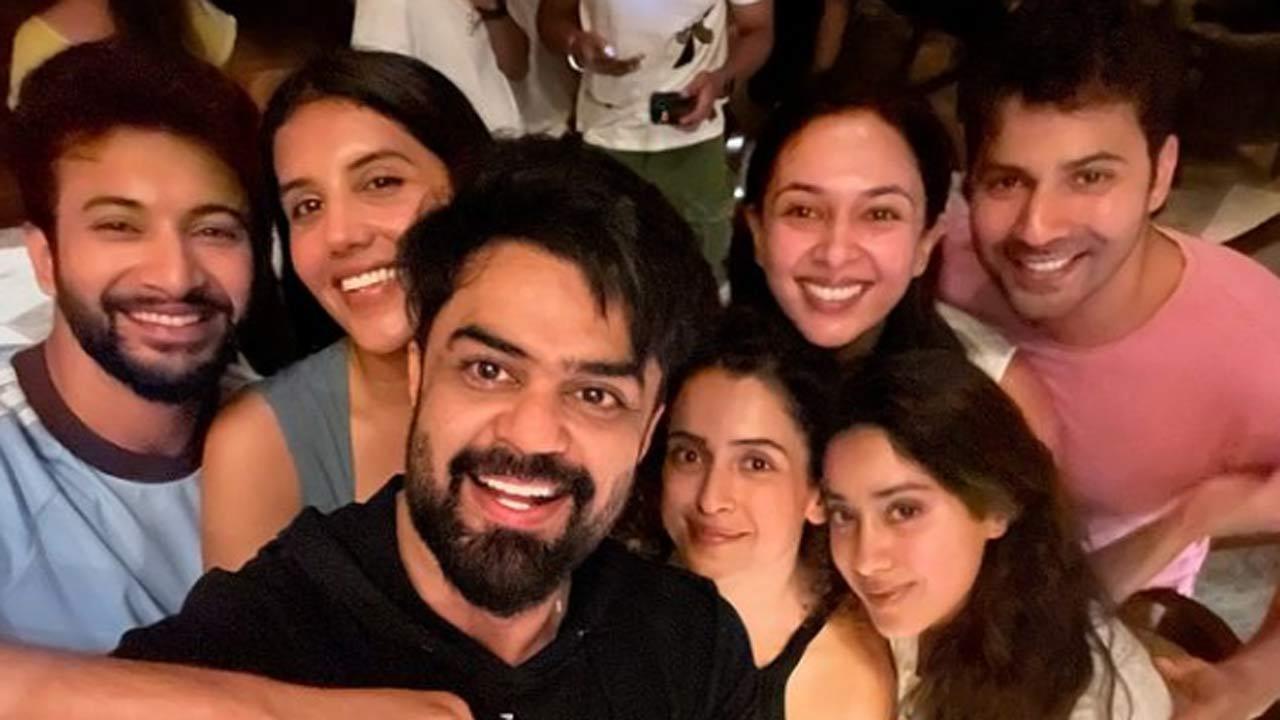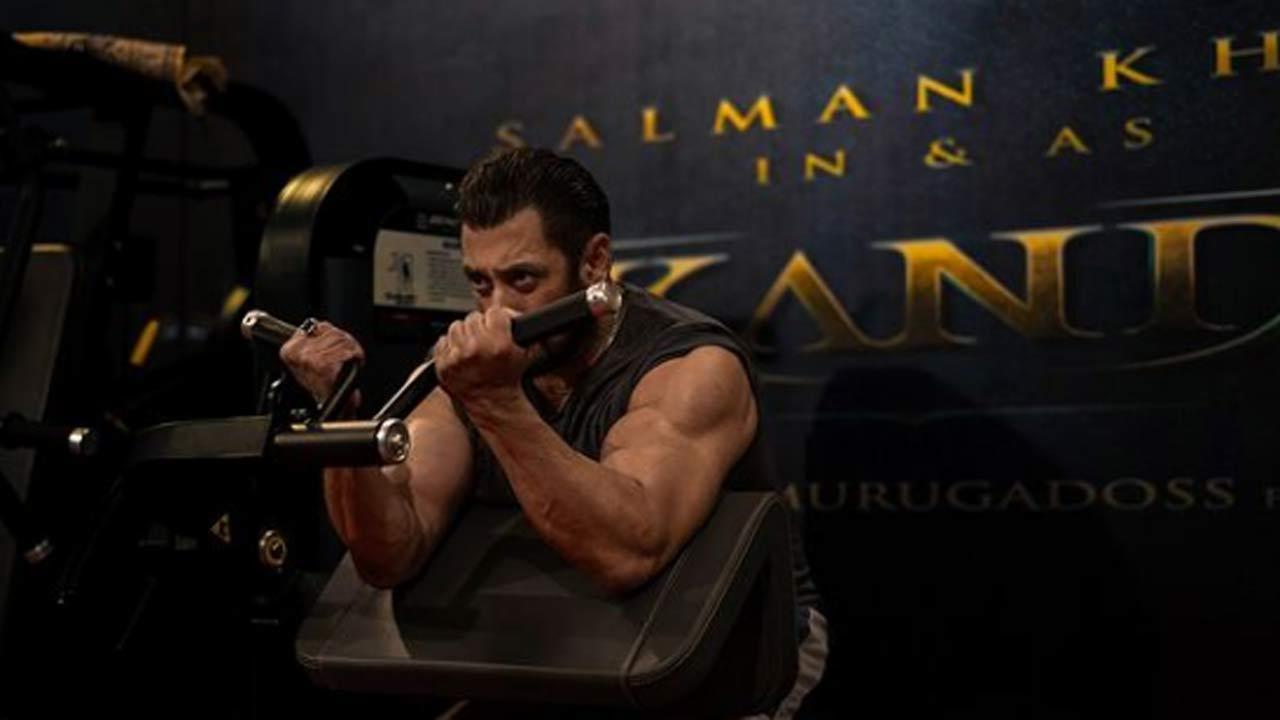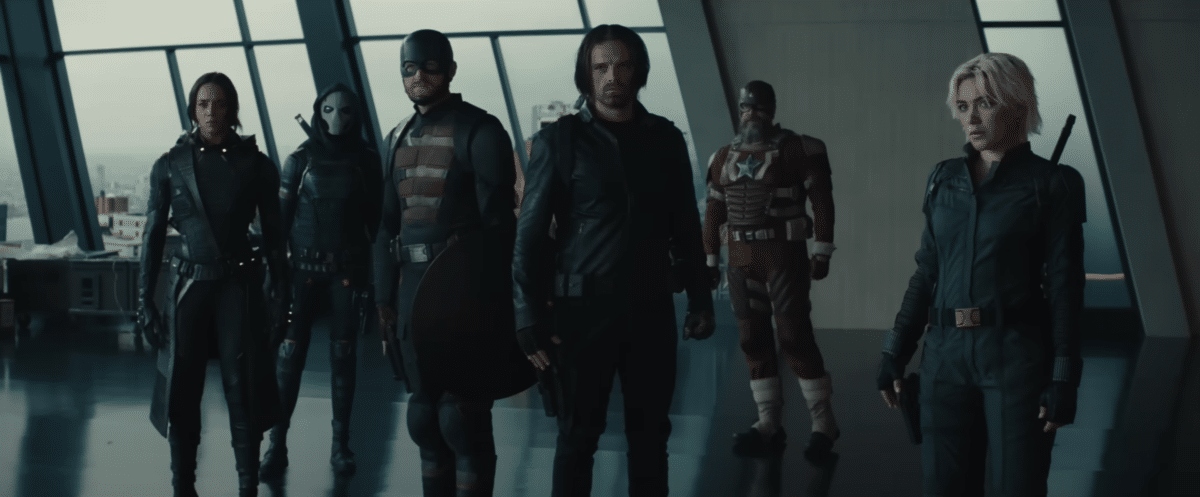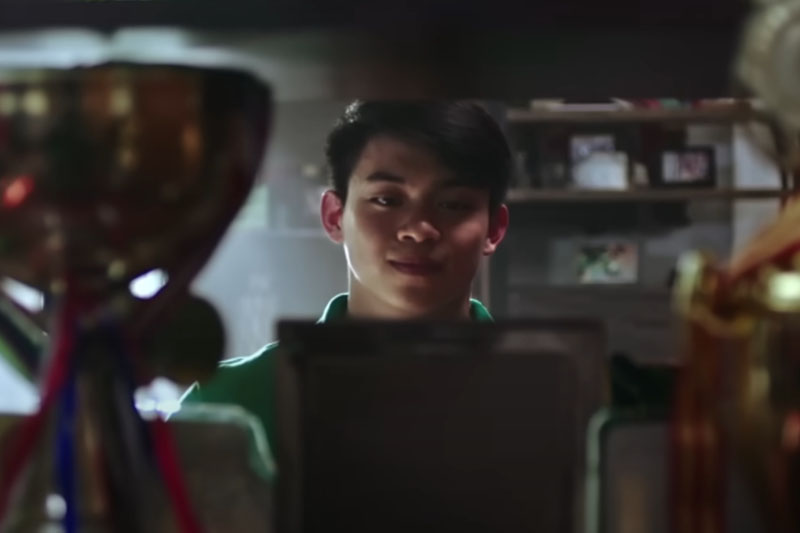Note: This article contains spoilers for Apple TV+’s new French-language series La Maison. The series follows a top fashion designer’s fall from grace after a racist rant heard in the first episode. La Maison is a show about the fashion industry that smacks of reality.
Where most fictional depictions of the fashion world resort to camp and frivolity, La Maison takes its subject deadly seriously. Fashion is a business, after all, and there’s nothing silly about making money—especially when billions are on the table. In the first episode of the Paris-set show, we meet a cast of well-dressed fashion folk.

There is Lambert Wilson as designer Vincent Ledu, who heads up his family’s prestigious fashion house; Carole Bouquet as Diane Rovel, the aging CEO of a competing mega-conglomerate who clings to stiff notions of “good taste”; Zita Hanrot as Paloma Castel, a climate-aware designer-on-the-rise who doesn’t give a second thought to her chipped nail-polish; Antoine Reinartz as Robinson Ledu, a scion of the Ledu house constantly swathed in goofy luxury pieces to signal his disdain for the family business; and Amira Casar as Perle Foster, the seriously well-styled muse of Ledu who looks the epitomize of je ne sais quoi . Minutes into the first episode, things take a darkly familiar turn when, in what he believes to be a private moment, Vincent Ledu spews racist vitriol in a rant to Perel Foster that quickly goes viral online. In the days and episodes that follow, he dismisses calls to step down from Ledu, even proceeding to show a retrospective runway collection.
All the while, Paloma Castel reacts by staging a fashion show under her own label, Doppel, using repurposed scraps from discarded Ledu wares, and Perle Foster transforms from muse to wheeler and dealer, making moves to replace Vincent with Paloma. The person charged with fashioning all this fashion drama? Carine Sarfati, La Maison’s costume designer, who had the tall order of not only dressing all these industry insiders, but also producing their runway collections. Sarfati’s work not only passes as plausible, but I'd argue that her creations for La Maison ’s fictional labels have such a credible point of view that they wouldn’t seem out of place on Vogue Runway .
Her characters skulk and machinate in a range of Alaïa, vintage Jean Paul Gaultier, vintage Claude Montana, Chloé, and Lemaire, while the textiles for the various fictional runway collections were sourced from the likes of Sophie Halette, Solstiss, and Hurel. Below, Sarfati deals Vogue into her process for each of La Maison’s top characters and fashion moments. On dressing Lambert Wilson’s Vincent Ledut Vogue : Who were you referencing when dressing Vince? Carine Sarfati: There were multiple references for Vincent’s style, but in the end, all combined a similar minimal aesthetic.
The inspirations were Steve Jobs, Giorgio Armani, Norman Foster, Haider Ackerman...
It’s always interesting, the relationship that fashion designers have to their own wardrobes. How did you want to approach that? For Vincent, the idea was to find him a uniform. With the inspirations in mind, we decided to give him a black, minimal silhouette that would be the link between all his looks.
Fashion designers often have this uniform: a strong visual identity that becomes a signature. Their creations should be the center of attention. There are some scenes in which Vincent is in his atelier shoeless.
Where did that come from? We discussed these scenes while finding his costumes. It is a symbol of despair; we find a vulnerable and more human side to him with this small, sensible detail. Where did you find his clothes? We went towards Japanese designers such as Yohji Yamamoto.
He also has clothes from radical designers like Dries Van Noten, Lemaire, and more classic, elegant brands like Hollington, Giorgio Armani, Charvet, Berlutti. On dressing Amira Casar’s Perle Foster Who were you referencing when dressing Perle? For Perle, we decided to inspire ourselves with previous iconic artists’ muses, as well as fashion icons such as Farida Khelfa [Azzedine Alaïa’s muse]. We wanted to keep a very French vibe.
I noticed her wearing Elsa Peretti Tiffany pieces. Was that a nod to Halston’s relationship with Elsa? It was not a direct intention, as the inspirations were mostly French women, but she obviously has a very similar story to Perle. What are some of the labels you put Perle in? We built Perle’s character very closely with Amira.
Amira has a true knowledge of fashion and a passion for it. We went towards radical, sculptural houses such as Alaia, Comme de Garçons, Junya Watanabe, Dries Van Noten, and Lemaire. What is your favorite look you put Perle in? The look she wears to the Doppel show is my favorite, with the shiny crocodile-embossed trench coat from Alaïa and her Dries Van Noten’s military chinos.
On dressing Carole Bouquet’s Diane Rovel Who were you referencing when dressing Diane? The inspirations came from strong women such as Liliane Bettencourt and Andrée Putman. She’s meant to be one of the world’s wealthiest women, and at the top of fashion. What did that mean for her wardrobe? Unfortunately, it is still a fact that dressing with a masculine wardrobe is a symbol of power.
We decided to give her sharp pantsuits in very vibrant colors and accessorized with extravagant jewelry. She needed to be sharp, with an identity and sass. What are some of the labels you put Diane in? We wanted sharp and luxurious suits and colors, so the brands we turned to were Valentino, Jil Sander, Max Mara, and Goossens for the jewelry.
What is your favorite look you put Diane in? I really liked the look she wore going into the Ledu house—this very light silhouette with a trench coat from Chloé and her white suit from Valentino. She looks victorious in this outfit. On dressing Zita Hanrot’s Paloma Castel Who were you referencing when dressing Paloma? The character of Paloma was inspired by the new generation of designers who play with eras, luxury vintage, and sportswear.
There are fewer rules and more freedom. We wanted to see an evolution in her wardrobe and look into designers with a similar approach to fashion. In the end, Clara Daguin, Marine Serre, Kevin Germanier, Victor Weinsanto, and Jeanne Friot were the inspirations for the styling.
We then adapted their silhouettes to Zita’s personality and origins. We looked at various charismatic young women, street-style images, et cetera. What are some of the labels you put Paloma in? For Paloma, it was very important to us to remain credible and have a sensible approach to her wardrobe.
We shopped some vintage designer pieces like Jean Paul Gaultier, Montana, some brandless pieces, but also upcycled pieces for her. The few contemporary pieces we bought for her mostly came from Dries Van Noten and Acne Studios. We believe these two brands would be brands she could be interested in and shop for herself.
What is your favorite look you put Paloma in? Her key pieces and my favorite look were a vintage leather blouson from Claude Montana, worn with a vintage mesh top from Jean Paul Gaultier, an upcycled pair of trousers we designed for her—as if it was one of her character’s own creation—and vintage cowboy boots. On creating Ledu’s runway collection in Episode 1 What were you referencing when creating that collection? This collection is a retrospective of the Ledu house. This means it was important to have a combination of dresses that could have been from different decades.
The Ledu brand is a haute couture house with the savoir-faire of the lace at the center of its identity. Did you design all these pieces specifically for La Maison? Yes. We established an atelier that worked throughout the entire show to create all the different fashion shows, as well as some pieces to create the identities of the different brands worn by some characters.
We created this brand from scratch. The identity was imagined by different teams following the direction of José Caltagirone and Valentine Milville [the creators and showrunners]. In the costume department we designed the house’s iconic pieces, such as the It bags, the wedding dress, the silk scarves.
Did you seek any consultation from the fashion industry? Yes, I surrounded myself with several people from the fashion world. For some of them, it was their first time working in a costume department. We created a team with stylists, embroideries, textile designers, young fashion creators.
.. On creating the Doppel runway collection in Episode 1 This was a bold collection with quite a point of view.
How did you go about creating it? The starting point of this collection was written in the script. We knew we had to create a full collection with only upcycled materials and tell a story with it. Doppel is a radical upcoming brand that loathes everything the fashion world today represents, but keeps in mind fashion history and creators like Martin Margiela.
There is a strong message: to stop fashion waste and consume better. The idea was to collide these polished, competitive luxury houses with trashed fabrics, all of this on a single garment. We created fabrics and metal pieces to represent these brands and made patchwork pieces and jewelry.
Did you designed all these pieces specifically for the TV show? Yes, it was all made in-house from scratch. Did you seek any consultation from the fashion industry for this collection? We had some young designers in our atelier who focused on this collection to make all the upcycled pieces. It is a particular view on clothing, so it was important to have passionate designers work on them.
.




















